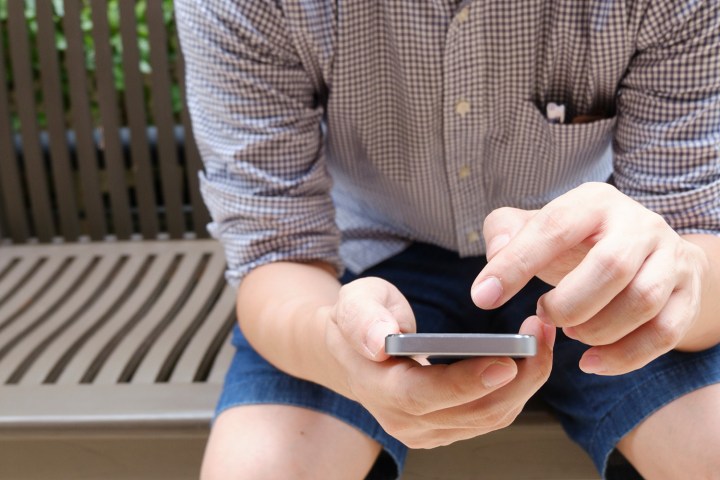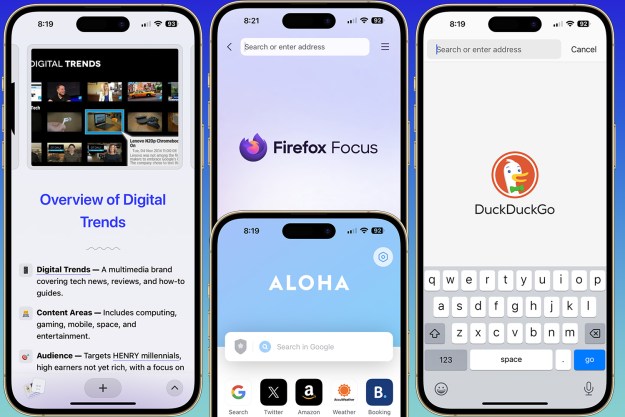
The phone arrives in a couple of days, as described, and you pat yourself on the back for your bargain-hunting skills. But you can’t activate it. Or maybe you use it for a month or so, and then it gets blocked. Upon further investigation, you realize your new phone has been reported lost or stolen. The seller won’t respond to your messages. To make matters worse, no one wants to help you – not your carrier, not the website you bought on, not even the police.
The used phone scam is frighteningly simple.
We’re sorry to say, you’ve fallen victim to a horrifyingly common used phone scam. A quick Google search reveals countless threads on forums across the world going back years, where victims appeal for help because they bought a phone that turned out to be blacklisted and unusable. Read through them and you’ll see the vast majority don’t have a happy ending. The victim typically has to eat the loss, with no prospect of getting their money back.
The used phone scam is particularly pernicious, because it doesn’t rely on a victim’s gullibility, and it’s not as well-known as something like the white van speaker scam. Everything appears to be perfectly legitimate right up to the point your new phone gets blocked. If it has happened to you, sadly there’s nothing we can do to help you, but read on if you want to learn more about the scam and how to avoid it in future.
How it works
The used phone scam is frighteningly simple. Perpetrators range from criminal gangs to insurance scammers to the morally dubious down on their luck. In some cases, the phone you’ve bought will actually be stolen. The thieves who snatched $370,000 worth of new iPhone X handsets, for example, likely tried to sell them as quickly as possible, before the phones were blocked.
Sometimes the scammer will be selling a new phone they legitimately got, probably as a contract upgrade, but then claim for it on insurance. That way they can sell the phone for cash and double their money when they claim it has been lost or stolen.

Another possible scenario is the seller got the handset legitimately as a contract upgrade or as part of a new contract, sold the handset to you, and then defaulted on the monthly payments. They got the cash from you, for a phone they didn’t yet own, and then stopped paying for it, leaving you with a blocked device.
The phone can be reported lost or stolen within a few days or it could be three months later. The result is the same – you end up with a blocked phone.
The nightmare part of this scenario for victims of the scam is that there’s no way for you to get the phone unblocked. Only the person who reported the phone lost or stolen can get it unblocked, and even then, it usually takes a few days, weeks, or even months.
How to avoid the used phone scam
There’s a lot of conflicting advice out there about best practices for selling and buying smartphones, so it can be a real minefield. While you can take steps to reduce your risks, it’s difficult to ensure you’re completely protected when you buy a phone from a private individual you don’t know.
“Before you buy a phone, you want to get as much information as possible,” David Dillard, managing director at Recipero (part of the Callcredit Information Group), told Digital Trends. “Do more homework upfront, and don’t take unnecessary risks.”
“Before you buy a phone, you want to get as much information as possible”
Recipero runs a service called CheckMEND where you can pay $1 to find out about the history of a phone. This is currently the most comprehensive service around to check on a phone’s history. It will tell you if a phone has been blacklisted or blocked with a carrier, but it also draws on data from law enforcement, the insurance industry, various retailers, and other sources.
“We aggregate multiple data sets and let the consumer make their own decision,” Dillard said.
You can find out if a phone has been reported lost or stolen for free using the Cellular Telecommunications and Internet Association (CTIA) stolen phone checker, but it relies on the Groupe Spéciale Mobile Association (GSMA) for data, which comes from participating operators worldwide. It doesn’t factor in some of the sources CheckMEND can access.
“There’s a danger of false positives,” Dillard said. “You could use the CTIA phone checker and find it’s green, then the phone gets reported stolen three days later, and now you have a blacklisted phone that’s stolen property.”
CheckMEND also tracks things like inventory in transit and enterprise devices out on lease. If thieves steal from an existing inventory, there’s a delay between the device being stolen, people noticing that it’s gone, and then reporting it stolen. That delay is often long enough to sell a device. Or if someone sells you a device that has outstanding finance on it, you can’t tell that from the CTIA blacklist check.
But for all its sophistication, sadly, the CheckMEND system isn’t a cast iron guarantee of safety either.
The trouble with IMEI numbers
Every phone has a unique International Mobile Equipment Identity (IMEI) number. It’s easy to check your IMEI number. When you report a phone lost or stolen, the IMEI number is blacklisted, so cell service is blocked on that device.
To run a CTIA stolen phone check, or get a CheckMEND report, you need to have the IMEI number of the device. The idea is that a prospective buyer can ask the seller for the IMEI number and then run a check on it, allowing them to buy with confidence. But then criminals started using IMEI numbers to clone phones and run new kinds of scams.
“If you buy second-hand from a retailer, make sure they have a good return policy.”
It used to be quite common to post IMEI numbers on sales listings. But if you look online today, in countless forums, you’ll see people asking if it’s okay to post an IMEI number, usually followed by numerous comments warning about the risk of cloning. It all sounds a bit paranoid.
“I heard about the paranoia, so I did a test,” says Dillard. “I placed a phone up for sale in an online marketplace, published the IMEI in the listing, and within 72 hours it was used in a commission fraud.”
A wireless employee took the IMEI and activated the device for the commission money and it took David approximately three months to have it restored once it was blacklisted.
“Never publish your IMEI on the web,” he said. “If you’re going through a trusted network and the buyer calls or messages privately and wants to check the IMEI; that’s probably okay; use your intuition. But never put it on the web, like in an eBay or Craigslist listing.”

Another scam that’s proving very tough to combat is “credit muling”. A criminal persuades someone to activate multiple lines with a carrier and take several phones. They pay the “mule” a tempting sum for their time and trouble and tell them to cancel the contracts in a month. Meanwhile the criminal sells the phones, all with clean IMEIs, through eBay, Craigslist or wherever and makes a tidy profit.
When the mule tries to cancel the contract, they find out that they can’t without returning the phones or paying a hefty cancellation fee and they’re on the hook for the full amount. The buyer only finds out 45 to 60 days later when the payment is defaulted, and their new phone gets blocked.
In this kind of scenario, even if you got a CheckMEND report beforehand, you’re still going to be out of pocket with little recourse. You have a certified report that the phone wasn’t stolen when you took ownership, so you’ve done your due diligence, but it’s not going to be much use unless the cops subsequently catch the criminal, and that’s a lot easier said than done.
While some sellers, perhaps understandably, won’t share IMEI numbers, you can always ask them to get a CheckMEND report to prove the device they’re selling is legitimate.
What else can you do?
“You’ve got to know who you’re buying from, so you have recourse if something goes wrong” Dillard said. “If you buy second-hand from a retailer, make sure they have a good return policy.”
Most places offer a 30-day returns policy. With PayPal, you have 45 days to dispute. We recommend making purchases with a credit card, as you can dispute charges if the phone ends up being blocked. If you buy in cash from a stranger you met through Craigslist, then there’s really nothing much you can do. It’s a gamble.
GameStop, Gazelle, and Sprint all use the CheckMEND system, so at the time of purchase, you can be sure that the phone you’re buying isn’t blocked. However, as we’ve discussed, that’s no guarantee it won’t be blocked down the line.
The top three carriers in the U.S., AT&T, Verizon, and T-Mobile all rely upon the GSMA system. We contacted all three, but they either didn’t reply or declined to be interviewed for this piece. We also reached out to the CTIA, as well as Gazelle and Swappa, but have yet to hear back.
It appears this is a major problem, and no one wants to be held accountable. An industry-wide effort to pool resources and share data on phone status in real time would undoubtedly reduce the risk for the phone-buying public. It’s something CheckMEND is trying to work towards, but unless everyone buys in, it’s never going to give people purchasing used phones 100 percent confidence, and the scams will continue.
Editors' Recommendations
- 5 phones you should buy instead of the iPhone 15
- Why you should buy the iPhone 15 Pro Max instead of the iPhone 15 Pro
- Everything Apple says is wrong about the DOJ’s iPhone lawsuit
- Mophie made one of the cutest iPhone accessories I’ve ever used
- 5 phones you should buy instead of the iPhone 15 Pro Max


